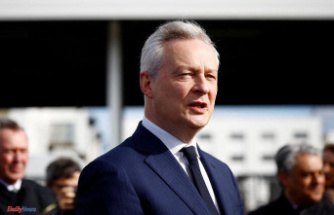The Russian attacks on Ukraine show once again that efficient air defense is essential. But Germany in particular still has a number of gaps. Defense Minister Lambrecht now wants to retrofit together with NATO partners.
Germany has launched a project to build a better European air defense system with more than a dozen other countries. Federal Defense Minister Christine Lambrecht and colleagues signed a declaration on the so-called European Sky Shield Initiative on the sidelines of a NATO meeting in Brussels.
This should help to close existing gaps in the current NATO protective umbrella for Europe. There are deficits, for example, in the area of ballistic missiles, which reach great heights on their trajectory, and in the defense against drones and cruise missiles.
The background to the German initiative is above all the Russian war of aggression against Ukraine. According to NATO, it has fundamentally changed the security situation in Europe and therefore necessitates additional efforts in air defense. So far, missile defense in Europe has primarily been aimed at possible threats from Iran.
Among other things, new weapon systems are to be purchased jointly via the European Skyshield Initiative, which together will then cover a large area as cheaply as possible. "In this way we are meeting our joint responsibility for security on our continent," said Lambrecht at the start of the project. It is about "achieving political, financial and also technological synergy effects". According to the SPD politician, 14 other countries have been involved in addition to Germany.
The signing ceremony was attended by representatives from Great Britain, Slovakia, Norway, Latvia, Hungary, Bulgaria, Belgium, the Czech Republic, Finland, Lithuania, the Netherlands, Romania and Slovenia. According to diplomats, Estonia also wants to take part. Chancellor Olaf Scholz announced the plans for the new initiative at the end of August. He spoke of a "security gain for all of Europe" and argued that European air defense would be cheaper and more efficient than if everyone built their own, expensive and complex air defense.
Germany is currently using the Stinger anti-aircraft missile for closer range and combating aircraft and helicopters, which was also fired into Ukraine for a shoulder launch. The larger Patriot system works at medium distances. Germany still has twelve launch sites - but this is far from enough to protect the entire country.
When it comes to defending against ballistic missiles that reach great heights on their trajectory, the Bundeswehr is even said to have a "capability gap". One of the probable options for the Bundeswehr is the acquisition of the Israeli Arrow 3 system. This is the highest level of Israel's multi-stage missile defense system and can destroy attacking weapon systems up to 100 kilometers above the atmosphere in the early stages of space. This also increases the area protected on the ground and destroys warheads far from the target. In addition, the purchase of further Patriot and IRIS-T systems is under discussion.












